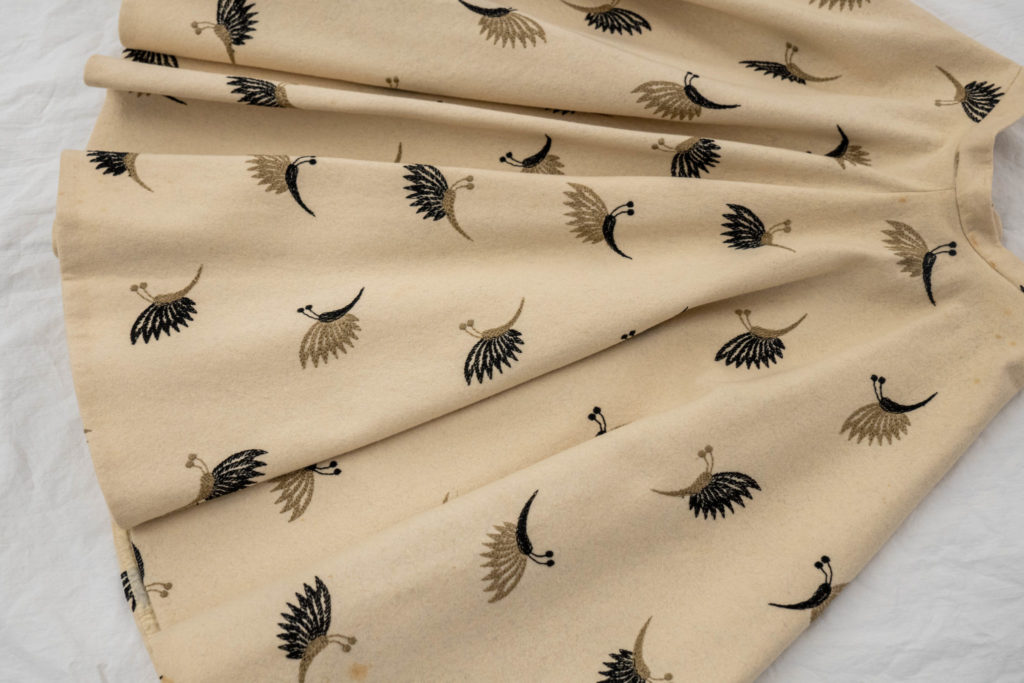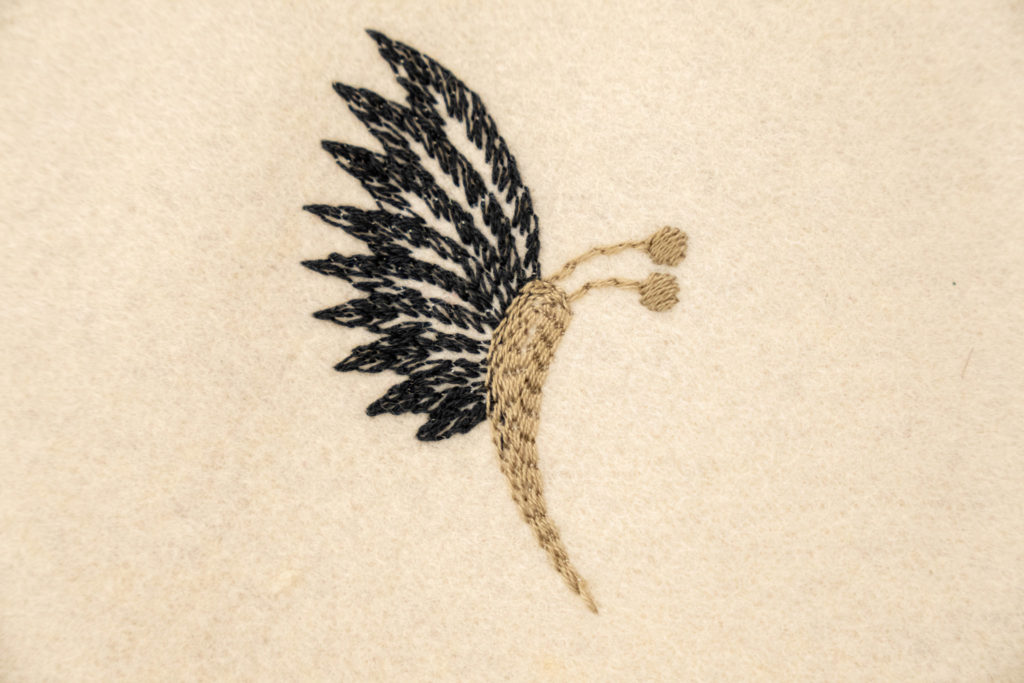
Story by Megan Osborne and Paula Alaszkiewicz
With the spring semester behind us, we look forward to a different rhythm over the coming summer months. However, those of us on the Front Range must first endure “moth season.” From mid-May to late June, Miller moths – the adult stage of the army cutworm – temporarily take up residence here on their annual migratory journey from the plains of Eastern Colorado and adjacent areas to the high mountains. This year, a sustained period of cool and wet weather has stalled the pace of migration, leading to a longer stay in and around Colorado State University.
At the Avenir Museum, we are using the local “moth season” as an opportunity to share an unusual object from the collection. Hidden amongst the colorful poodle skirts in the crowded 1950s storage cabinets, we found moths! Not to worry, these moths pose no threat to the collection. Embroidered moths scatter in flight across the surface of an ivory wool circle skirt. The neutral color palette of the skirt and embroidered moths, rendered in alternating combinations of black and tan, mimic the natural coloration of the Miller moth.
While it is alarming to imagine moths in a textile collection – or on the surface of a wool skirt – Miller moths do not feed on cloth. However, a dead moth can attract other problematic pests. Considering that Miller moths are not attracted to textiles, it is ironic that their common name refers to the fine dust that accumulates on the clothing of grain millers.
Miller moths are temporary visitors to CSU, but in the controlled pest-free environment of the Avenir Museum, this skirt will endure many “moth seasons” to come.
Donor: Marcia Schwalbe Fogel and Vicki Fogel Mykes
Avenir Museum Permanent Collection #2010.114

The Avenir Museum is in the Department of Design and Merchandising, part of CSU’s College of Health and Human Sciences.